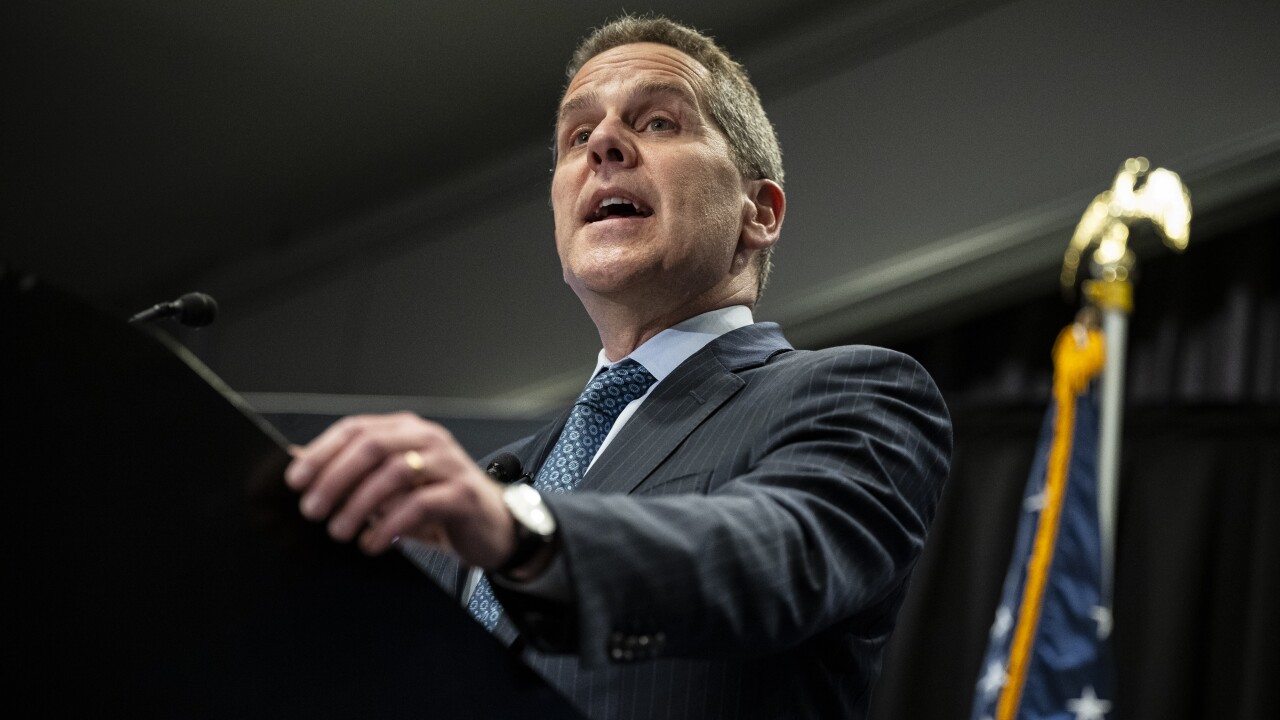Ginnie Mae is declaring its reverse mortgage securitizations off-limits for a new type of product that would require the servicer to take interest rate risk.
After May 31, the agency will no longer allow its pools to include fixed-rate Home Equity Conversion Mortgages that distribute some of their proceeds as a line of credit. Such loans have cropped up in response to rule changes at the Federal Housing Administration, which insures HECMs, the predominant reverse mortgage program.
Banning them from Ginnie securitizations is likely to hamper the product's growth, since there are few other secondary marketing options for reverse mortgages.
Ginnie is concerned about these fixed-rate credit lines because if interest rates rise, the servicer would be on the hook to finance additional draws at a higher cost.
"Anytime you have a fixed rate instrument" and future draws are subject to floating or market rates, the "interest rate risk is unknown," says Jeffrey Taylor of Wendover Consulting in Greensboro, N.C.
Last fall the FHA capped at 60% the proceeds seniors can receive during the first 12 months of a HECM. To tap the remaining proceeds after the first year, seniors could choose a line of credit or fixed monthly payments.
This change made the adjustable-rate version of HECM more attractive because of the line of credit feature. However, many seniors prefer fixed-rate loans. So some reverse mortgage lenders found a way to combine a fixed-rate HECM with a line of credit.
If a fixed-rate $100,000 HECM is issued with a 4.5% interest rate, for example, the senior can tap the remaining $40,000 in proceeds at any time two, five or 10 years down the road. The Ginnie servicer would have to finance the draws, which yield 4.5%, in a market where the prevailing rate might be 8%.
"It could put undue stress on the issuers," Taylor says.
Ginnie Mae described the risk in an April 1 memorandum to lenders.
"The origination of HECM loans in which servicers are committed to advancing future funds at fixed interest rates gives rise to the risk that such advances will become uneconomic should interest rates rise from the time of origination," the agency said.
"The impact of negative spreads between the fixed note rate and future prevailing rates could be exacerbated in such loans, and endanger the servicers capacity to meet their HMBS obligations."
Starting June 1, Ginnie Mae issuers will be limited to securitizing fixed-rate HECMs that offer fixed monthly payments.
Reverse mortgage lenders that want to offer HECM product with fixed-rate draws will have to find private investors who are willing buy those reverse mortgages.
"I complimented industry leaders for trying to be innovative," Taylor says. There is no doubt that seniors "love fixed-rate products."
In introducing a fixed rate product in December, Reverse Mortgage Funding said the line of credit feature "provides improved cash flow while also satisfying the preference for a fixed product."
The Melville, N.Y., based reverse mortgage company could not be reached for comment about Ginnie's action





